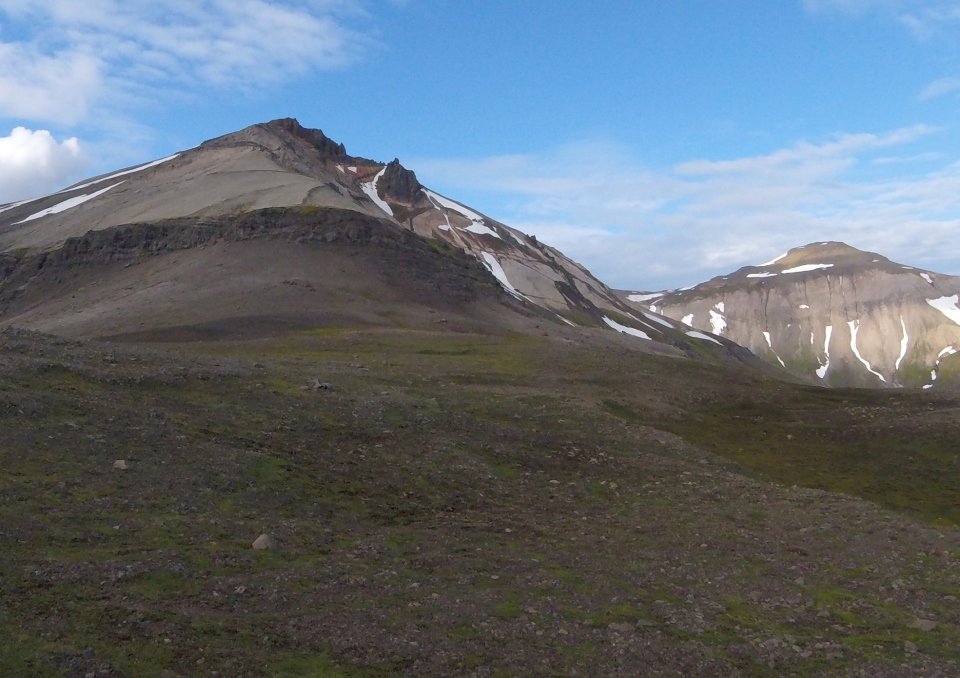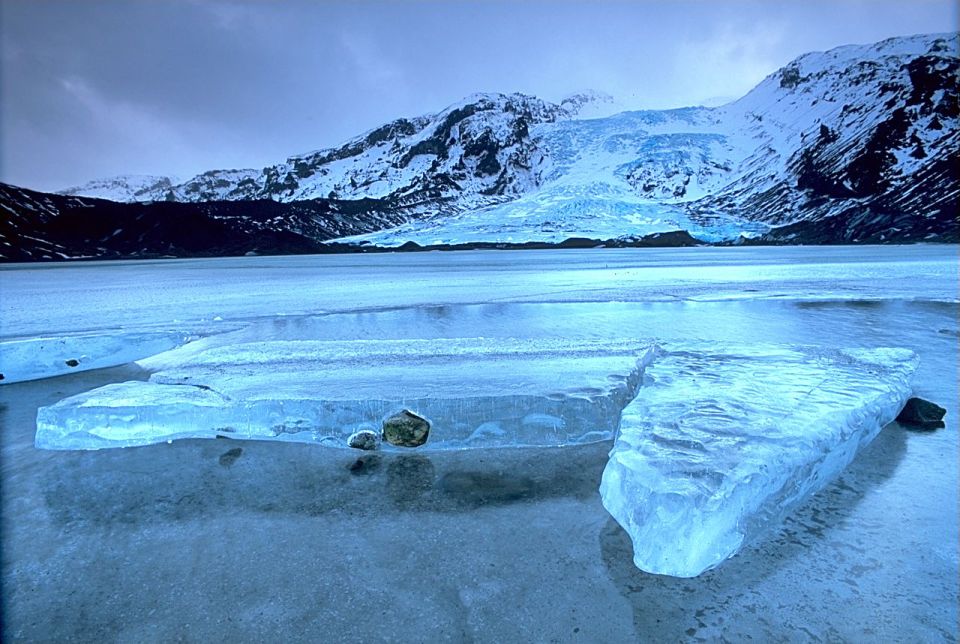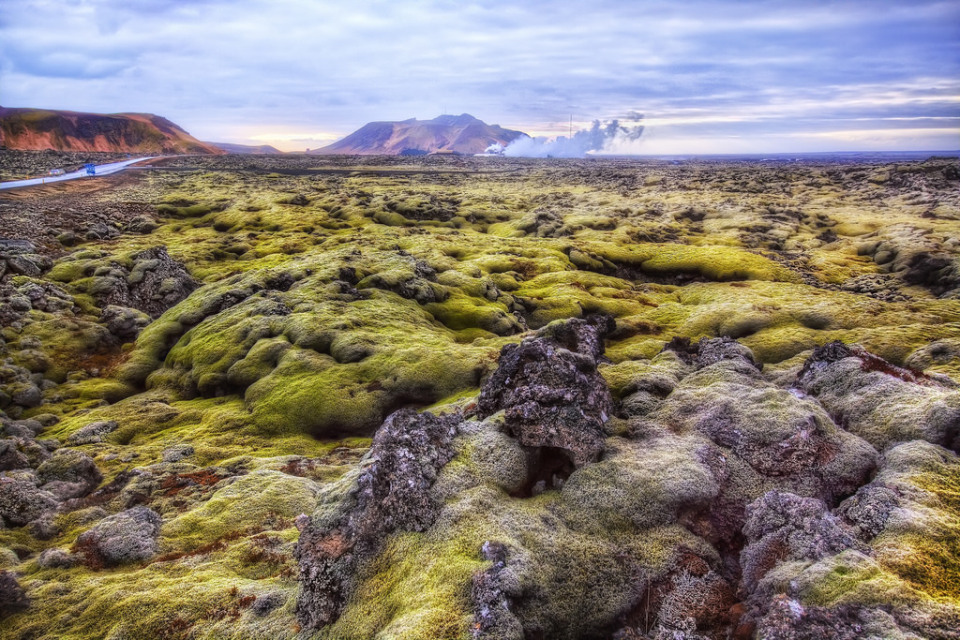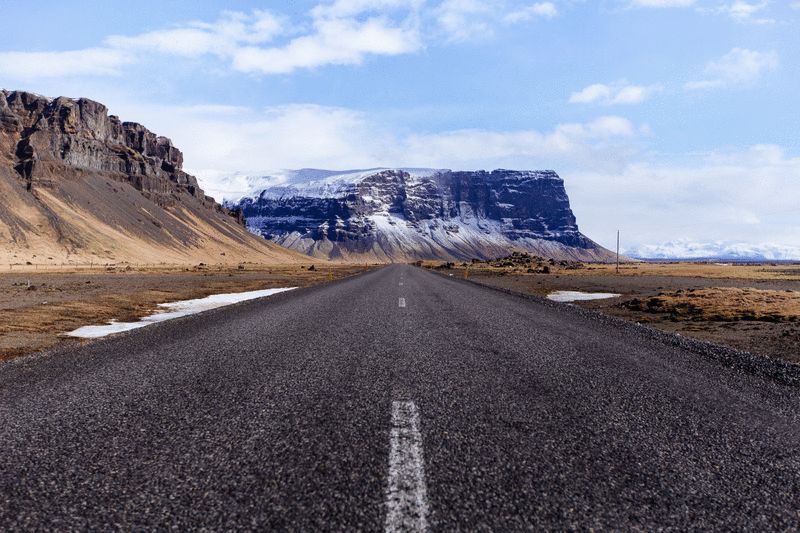Iceland is an island near the Arctic Circle, between Greenland and Norway. Iceland has a population of only 348,580 people. You can drive around the island of Iceland in a single day.
Iceland is known as “The Land of Fire and Ice” Iceland is home to some of the largest glaciers in Europe, and some of the world’s most active volcanoes.
Iceland has long summer days with near 24-hours of sunshine, but in winter the days are short with only a few hours of daylight.
Landscape
Active volcanoes, bright green valleys, glacier-cut fjords, black sand beaches, and roaring rivers are the main features of Iceland. Formed about 25 million years ago, Iceland is young in terms of geology, and is home to some of the world's most active volcanoes.
The island has been created by a volcanic hotspot created by a crack in the Mid-Atlantic Ridge. This is where the Eurasian and North American tectonic plates meet. The landmass is still growing by about 5 cm per year, as these two plates move apart.
The last volcanoes to erupt were Eyjafjallajökull in 2010 and Grímsvötn in 2011. Iceland even has the world's newest island, Surtsey, formed in a volcanic eruption in 1963. Like New Zealand Iceland also has many earthquakes.
Environment
The environment is important to many people in Iceland. Fisheries and exports of seafood are important to the economy. Like New Zealand, Iceland has a quota system in fisheries, limiting the numbers of fish that can be caught.
When Iceland was first settled, it was mostly forest. The arrival of humans led to loss of forest through farming and development. Volcanic activity, glacier movement and a harsh climate have caused a lot of soil erosion. Only about a quarter of Iceland has natural plant cover today.
Energy
Like New Zealand Iceland is able to make electricity from renewable sources. Most of Iceland’s electricity comes from hydroelectric power and geothermal energy. Nearly 90% of homes in Iceland are heated with geothermal water. Geothermal steam has been used by some industries, such as vegetable farming in greenhouses.
Weather
 Iceland has mild, coastal weather, due to the warm Gulf Stream. The weather is also affected by the East Greenland polar current curving south-eastwards round the north and east coasts. The average summer temperature in Reykjavik is 10.6°C in July, with average highs of 24.3°C. The average winter temperature in Reykjavik is about 0°C in January with average highs of 9.9°C. The weather can be very changeable.
Iceland has mild, coastal weather, due to the warm Gulf Stream. The weather is also affected by the East Greenland polar current curving south-eastwards round the north and east coasts. The average summer temperature in Reykjavik is 10.6°C in July, with average highs of 24.3°C. The average winter temperature in Reykjavik is about 0°C in January with average highs of 9.9°C. The weather can be very changeable.
Ready for a quiz? Try the 'Iceland' interactive activity.








